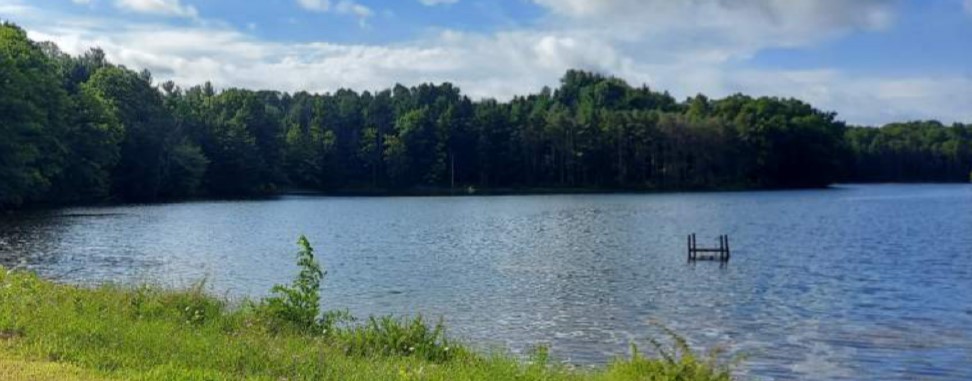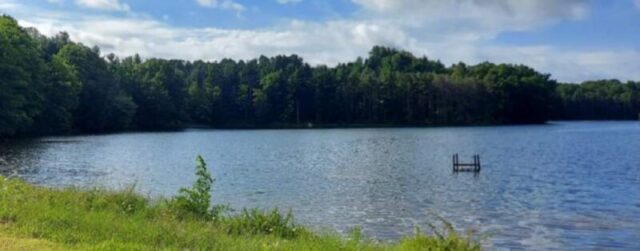
A challenge to the water decision of Dec. 26 in the village that involves the reservoir was filed on Friday.
Water is increasingly a precious commodity, but will it become liquid gold?
Any engaged citizen hopes that their elected leaders have vision. Have foresight. Are curious. Respond to the public’s clarifying questions and provide transparent public answers. Have some sense of history, past and future.
Ah yes, the future.
I was at an event in Ithaca last May. I happened to sit next to a gentleman who turned out to be a distinguished retired professor – a scientist – from Cornell University. We got to talking and he asked me where I was from. When I said “Fredonia,” his entire demeanor changed. He lit up. He pointed at me and then at himself and said, “you and I won’t be around to see it, but where you live right now will have two or three or more times its current population by the end of this century. So will Buffalo and Rochester,” he said, “plus Detroit, Chicago, Milwaukee, and all the Canadian cities and communities around the Great Lakes. All because of…water.”
My head was spinning, but I said to him, “Professor, when do you believe that this in-migration of population to the Great Lakes will begin in earnest?” He looked at me and gave me kind of a tired laugh and said, “if you’d asked me that question five years ago, it’s likely that my answer would have been different,” indicating that the planet is heating even faster than they expected just 5 years ago, “but, if I had to say, I’d say that in-migration of population to the Great Lakes, including where you live now, will begin in earnest in 25 years’ time.”
Just an anecdotal conversation that has stuck with me for the better part of a year.
Dr. Kent Glenzer, one of my oldest friends, is a Fredonia native with degrees from Northwestern, Cornell, and Emory. Currently, he is a professor of public policy and advocacy at Middlebury Institute of International Studies at Monterey in Northern California. Glenzer left Fredonia at 18, and after graduating from Northwestern, he spent most of the next 30 years of his life out in the world, working on a variety of international issues, including water.
Glenzer is not just an expat; he owns a home in the village. As a result, he has been following the water issues in Fredonia closely.
I spoke with him recently and recounted my May conversation in Ithaca and he largely agreed with the professor’s take. He even added a couple of good points to what the professor said. One, he said that it’s his sense that some locally do not fully understand how valuable the Reservoir water is right now, and that it will “exponentially increase in value” as the years and decades move on. “Liquid gold,” indeed.
Glenzer asked me, “rather than decommissioning the reservoir, why isn’t the village looking at expanding it, or even building a second reservoir if possible?”
Good questions.
Glenzer also said that Fredonia and the lake shore should be thinking right now about the potential for significant population growth in the coming years and decades. “Having your own source of clean, dependable water will give any community a step up,” he said. One would have to believe that this reasoning would also apply to economic development and future jobs. The jobs of the future in Fredonia could be in a large part tied to its municipal supply of water.
Aside from just Fredonia, perhaps this is something that the mayors and town supervisors in Northern Chautauqua County could collaborate on? Create an ad hoc committee of citizens from across the various towns, villages and city – perhaps borrowing members from the respective planning boards – to start looking at what future population growth would look like and its potential impact on our Northern Chautauqua region.
Perhaps partnering with the University at Buffalo (more below), SUNY Fredonia, and JCC make sense. There is more information out there to get started than one may think.
For whatever reason, climate change elicits skepticism in some corners. But if you’re leery of what I’ve written above, I would encourage you to investigate work that is currently being done regarding “the Great Lakes as a climate destination” or “Buffalo as a climate destination.” Both efforts include Northern Chautauqua County. One thing you’ll find, echoing Dr. Glenzer’s statement from above, is that the University of Buffalo has been studying the potential of a large influx of new climate-related population to Buffalo and WNY since 2021.
In fact, Nicholas Rajkovich, associate professor in the School of Architecture and Planning, broke down some misconceptions related to Western New York as a climate refuge in a 2021 press release from UB. “The city and region have more work to do before they can claim that title, he says.”
“The larger Buffalo region needs to investigate this issue and think through the potential implications,” Rajkovich says. “The conversation is all about bringing people here, but what will we do to support them when they’re actually here?” This obviously includes the Village of Fredonia, and all of Northern Chautauqua County.
In that same press release, Dr. Rajkovich stressed that water access is another crucial factor that the region needs to consider. “Will climate migration compromise the availability and quality of drinking water for residents? These are possibilities that need to be taken into account,” he says. Though the Great Lakes system holds around 20% of the world’s surface freshwater, water insecurity is still an issue in the region. As examples, Rajkovich points to water quality problems in Flint, Michigan, and harmful algal blooms in Toledo, Ohio.
And then there’s the organization, American Resiliency, that helps communities plan for future changes in climate, changes that are already underway. American Resiliency has created 2050 climate models for all 50 states, including New York State. And compared to so many other states, New York’s mid-century modeling is surprisingly stable in some ways and overall positive, with some caveats. They say that Buffalo is one of a “narrow band of cities” that may well survive the worst aspects of climate change. This “band” would include Northern Chautauqua County.
So how is it possible to know what will happen in 26 years? I mean, a meteor could hit earth any old time, right? True. However, MIT professor Dr. Vaughan Pratt, makes his case for predictive modeling in a public online posting, “Once you know how the world works, predicting its future becomes possible in the case of smooth behavior. Predicting chaotic behavior is much harder. Weather is more chaotic than long term climate, which is why predicting the weather two months out is harder than predicting the climate 70 years out assuming the next 70 years continues the trends of the past 170 years.”
So, the past in modeling the future is very much prologue. American Resiliency’s models in 2050 predict that we will have 2-3 weeks more summer and an earlier spring. Temperatures will increase in Buffalo and along the Lake Erie shoreline to more than 90 days over 86 degrees. Snow will become rarer vs today. Winter precipitation will largely be rain. In fact, WNY’s climate will likely mirror present day Virginia. The good thing is, unlike other parts of the country, precipitation will not go away here, we’ll just have more rain, and less snow, which should sustain our inland sources of water. The downside of this is the potential for more extreme storms, especially larger hail. However, the positives will outweigh the negatives. In fact, American Resiliency believes that agriculture will continue to flourish here. They said, “anything you want to grow, you should be able to grow it in New York. Water is a given, and the state has so much potential.” If you’re interested, I would recommend checking out American Resiliency’s website and YouTube page.
So, what does all of this tell us? Clearly it says that we’re behind locally and we need to get off the dime. It’s way past time for forward thinking. It also tells me that we need to preserve our water resources including Fredonia’s reservoir. We’re going to need it. In fact, we’ll likely need more sources of water. Dr. Glenzer’s prescient question about enlarging the reservoir really needs to be looked at — and if not now, after the reservoir is repaired along with Fredonia’s water system.
It’s 2024, not 2099, and yet today, if you told anyone in the US’s interior Northwest, the American Southwest, the Great Plains, the Northern Plains, or any other drought stricken or water depleted area of our country, that a community in Western New York State was going to eliminate a 330-million-gallon spring fed reservoir with a gravity-fed distribution system, they would say that those people are out of their collective minds!
Decommissioning the Fredonia Reservoir would be like taking a pair of scissors to a Shohei Ohtani rookie baseball card. You would be destroying something that will be worth four or five times the value or more just 20-30 years down the road.
Many people locally believe that there is a way to move forward that will benefit both Fredonia and Dunkirk and make certain going forward that both communities have sufficient water for future growth on one hand, and peace of mind in the case of emergency or other contingencies on the other. That is creating “maximum capacity” between the two communities after Fredonia fixes its reservoir and water system. Currently, if I understand correctly, there are three water connections between the city and village that can be utilized in the event one community needs water in a pinch from the other. If a 24-inch line down Central Avenue from the city to the village line just south of the plaza would complete this scenario of maximum capacity, then that could be the cherry on top securing Northern Chautauqua’s water needs, both now and in the future. Redundancy, indeed.
As I said at the top of this:
Any engaged citizen hopes that their elected leaders have vision. Have foresight. Are curious. Respond to the public’s clarifying questions and provide transparent public answers. Have some sense of history, past and future.
Ah yes, the future.
Tom Carpenter is a Fredonia resident.




